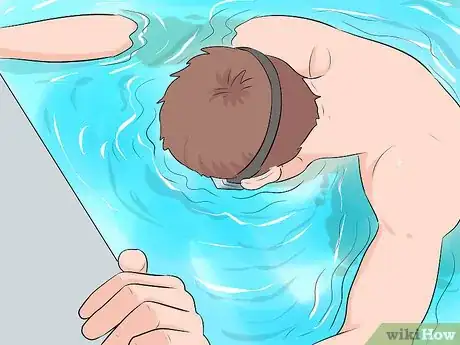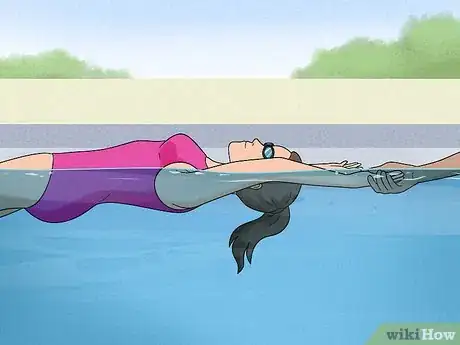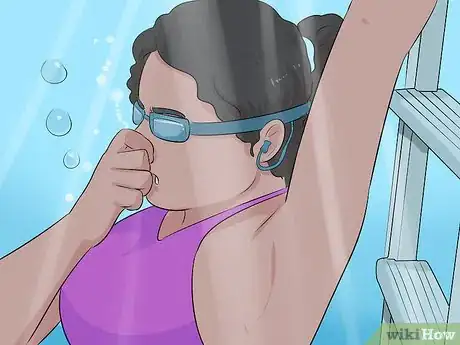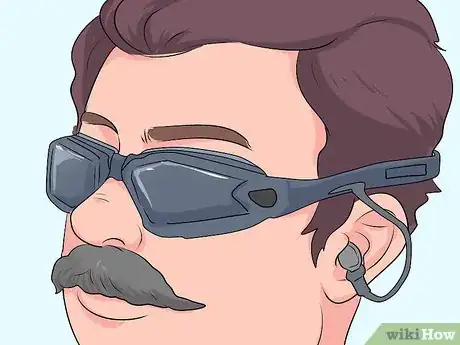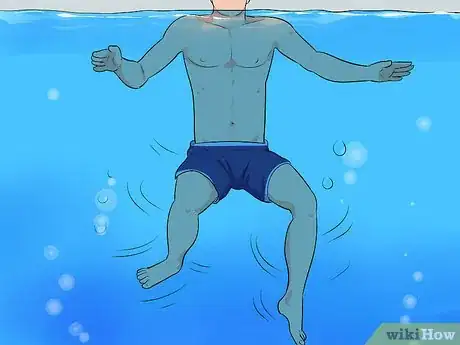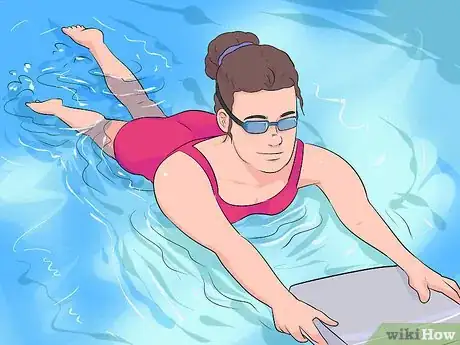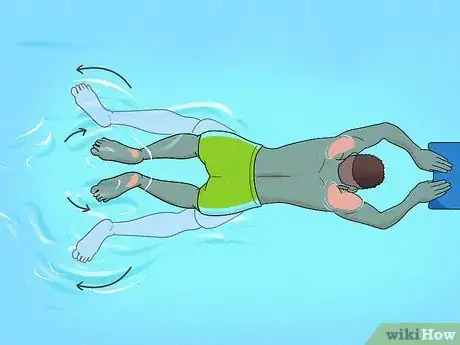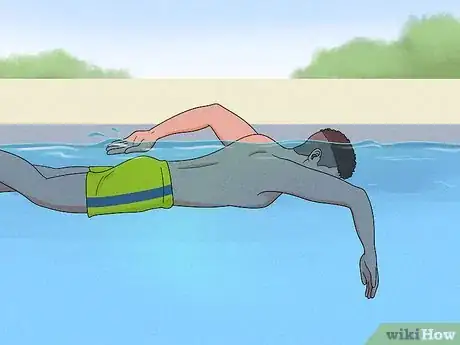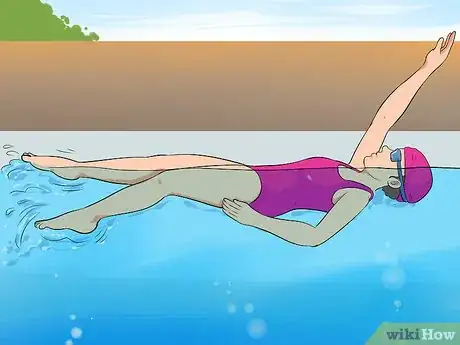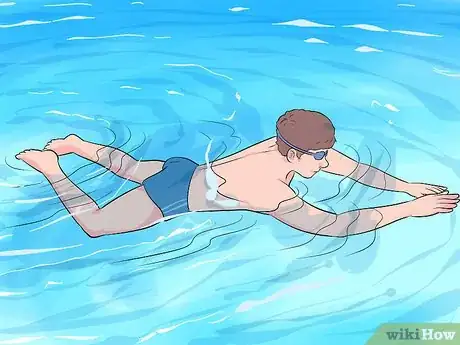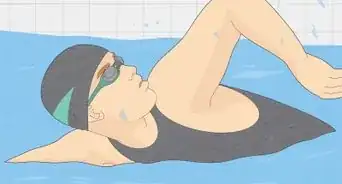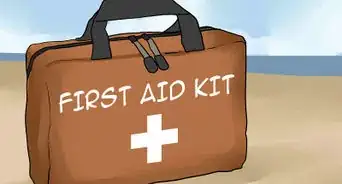This article was co-authored by Brad Hurvitz. Brad Hurvitz is a Certified Swimming Instructor for My Baby Swims, an adolescent swimming school based in La Jolla, California. Brad is trained as an Infant Swimming Resource (ISR) instructor with ISR's Self-Rescue® program. He specializes in training children aged six months to six years of age survival skills like floating on their back to breathe and swimming back to the wall, while also educating parents on how to better keep their kids safe. He has a Master of Business Administration from Oregon State University.
There are 14 references cited in this article, which can be found at the bottom of the page.
This article has been viewed 68,314 times.
Swimming is a great way to stay fit and have fun in the water, and it can be learned at any age. Whether you’ve never set foot in a pool before or just need a refresher, you can become a competent swimmer with a little effort and a positive attitude. Gradually get used to moving and breathing in the water, learn some basic strokes, and consider taking adult swim lessons to perfect your technique.[1]
Steps
Getting Comfortable in the Water
-
1Spend some time in the shallow end of the pool. If you don’t have much experience in the water, it can be helpful to get comfortable just being in the pool before you tackle swimming. Spend some time moving around in water that is shallow enough that you can stand on the bottom of the pool with your head still above the water.
-
2Practice holding your breath with your face underwater. Putting your face in the water can be a little intimidating at first, but after a few times it will feel natural. Stand with your body as far into the water as you’re comfortable with, then hold your breath and dip your face into the water.
- Once that feels comfortable, you can try submerging your whole body in the shallow end while holding your breath.
- If you’re worried about water entering your nose, you can pinch your nostrils shut with your fingers.[2]
- Don't blow out the air in your lungs while you're under the water—that will make you less buoyant.[3]
Advertisement -
3Have a friend pull you through the water while you float on your back. Once you’re in the water, lean back and spread your arms and legs out. Have someone take one of your hands and pull you slowly through the water. This is a good way to practice floating and moving through the water without having to worry about holding your breath.[4]
- Don’t worry if you have trouble keeping your entire body afloat. Your legs may angle slightly downward, which is fine.
-
4Practice “bobbing” in the deep end. Go to deeper water and hold on to the side of the pool or a ladder. Submerge your whole body while you exhale, then come up to inhale. Do this several times, and try to exhale for longer than you inhale. This will help you get comfortable breathing when you can’t touch the bottom of the pool.[5]
-
5Buy ear plugs and goggles to make swimming more comfortable. Having water in your eyes and ears isn’t necessarily a bad thing, but it can feel strange and distracting when you first begin swimming. Chlorine can also irritate your eyes and ears over time, so it’s a good idea to be prepared with goggles and ear plugs.[6]
- Try goggles on before buying them, and make sure they fit tightly without causing uncomfortable pressure on the bridge of your nose.
Mastering Basic Motions
-
1Practice treading water. Once you are in the pool, move your legs back and forth in a scissor motion, keeping them straight but not rigid. Then put both arms in the water and gently wave them back and forth horizontally, as if you are smoothing out the water beneath you.[7]
-
2Swim with your legs while holding onto a flotation device. Kicking properly is a very important part of swimming, and it can be easier to develop your technique when you don’t have to think about your arms at the same time. Get a kick board or pool noodle and use it to support your upper body in the water while you move yourself forward with your legs.
-
3Practice the flutter kick by moving your legs as if you were walking. This is the most basic swimming kick, and you can do it by keeping your legs straight and moving them back and forth in the water. Practice this while holding a flotation device until you feel confident.[8]
- While your legs should mostly be straight, it’s okay to let your knees bend by an inch or two as you move them through the water. Keeping them rigid may actually slow you down.
-
4Do a breast stroke kick by pushing your legs out in circular motions. While holding on to a flotation device, practice moving through the water by bending your knees up towards your sides, then kicking them outwards and bringing them back together behind you. Your feet should flex outward as you kick, and your legs should stay under the water.[9]
-
5Work on your arm strokes. You can do this while standing in the water until you get comfortable, then combine it with kicking to move through the water. Move your arms forward in alternating circles with your hands slightly cupped. Try to “scoop” the water backwards as you move your arms.[10]
- Keep your arms as straight as possible, and extend them as far as possible when reaching forward.
Learning Swimming Techniques
-
1Do a backstroke to practice swimming with your face out of the water. Float on your back with your legs stretched out straight. Gently move your legs in a flutter kick and move your arms through the water in wide circles like windmills. Be careful not to splash too much with your legs, as this will slow you down and make you tired faster.[11]
- Typically, you should move backwards in the direction your head is pointing when doing the backstroke. Your arms should be moving backwards like you are pitching underhand.
- When learning new swimming techniques such as a backstroke, consider working with a coach or instructor so that they can observe your form and help you improve.[12]
-
2Practice doing a side-stroke. Keeping your head above water, move sideways by reaching one arm forward and stretching the other out behind you, then bring both arms in towards your body. You can do a kind of sideways breaststroke kick by bending both knees, kicking one out in front of you and the other behind you, then bringing them back together.[13]
- Reach your arms out at the same time you kick your legs, then bring them all back in at the same time.
-
3Try a breaststroke to practice exhaling underwater. For this stroke, both your arms and legs will be extending out and away from your body and then circling back in. Do a breaststroke kick while your arms move out straight in front of your chest, then sweep to the side as if you are parting the water in front of you.[14]
- You should exhale when your hands and knees are coming forward, and come up to inhale when you’re pushing back with your arms and legs.
-
4Learn the freestyle once you’re comfortable holding your breath. This is similar to the backstroke, but you’ll be floating on your stomach. Do a flutter kick and move your arms forward through the water in a windmill motion. Exhale for 3 arm strokes, then turn your head to the side to inhale on the 4th stroke.[15]
Expert Q&A
-
QuestionWhat kind of workouts can I do to help improve my swimming technique?
 Alan FangAlan Fang swam competitively for over 7 years, through high school and into college. He specialized in breaststroke events, and participated in events such as the Speedo Championship Series, the IHSA (Illinois High School Association) state championships, and Illinois Senior and Age Group state championships.
Alan FangAlan Fang swam competitively for over 7 years, through high school and into college. He specialized in breaststroke events, and participated in events such as the Speedo Championship Series, the IHSA (Illinois High School Association) state championships, and Illinois Senior and Age Group state championships.
Former Competitive Swimmer Typical cardio and weight lifting routines can help if you are dedicated to becoming a stronger swimmer.
Typical cardio and weight lifting routines can help if you are dedicated to becoming a stronger swimmer.
References
- ↑ Alan Fang. Former Competitive Swimmer. Expert Interview. 10 January 2019.
- ↑ http://www.enjoy-swimming.com/overcoming-fear-of-water-1.html
- ↑ Brad Hurvitz. Certified Survival Swimming Instructor. Expert Interview. 13 February 2020.
- ↑ https://www.theguardian.com/lifeandstyle/the-swimming-blog/2014/jan/02/learning-to-swim-fear-of-swimming
- ↑ https://www.active.com/swimming/articles/breathing-basics-getting-comfortable-870012
- ↑ http://www.enjoy-swimming.com/swimming-equipment-1.html
- ↑ https://youtu.be/kFmOtf_Ew1w
- ↑ http://www.enjoy-swimming.com/flutter-kick.html
- ↑ https://youtu.be/spbF-0ELqoQ
- ↑ https://youtu.be/SONx52cyltI
- ↑ https://www.mensfitness.com/training/pro-tips/how-master-basic-swim-strokes/slideshow
- ↑ Alan Fang. Former Competitive Swimmer. Expert Interview. 10 January 2019.
- ↑ https://youtu.be/heKKhNBHp98
- ↑ https://youtu.be/xH4mV7rRBnE
- ↑ https://youtu.be/5HLW2AI1Ink
- ↑ Alan Fang. Former Competitive Swimmer. Expert Interview. 10 January 2019.
About This Article
To learn to swim as an adult, first spend some time getting comfortable in water by moving around in the shallow end, floating on your back, and practicing holding your breath underwater. Then, move toward the deep end of the pool, and practice treading water by moving your legs back and forth. You should also practice kicking your legs while holding onto a flotation device. Once you're comfortable with that, see if you can swim without the device by moving your arms forward in alternating circles while kicking your legs. For more tips, like how to master different swimming techniques, scroll down!


